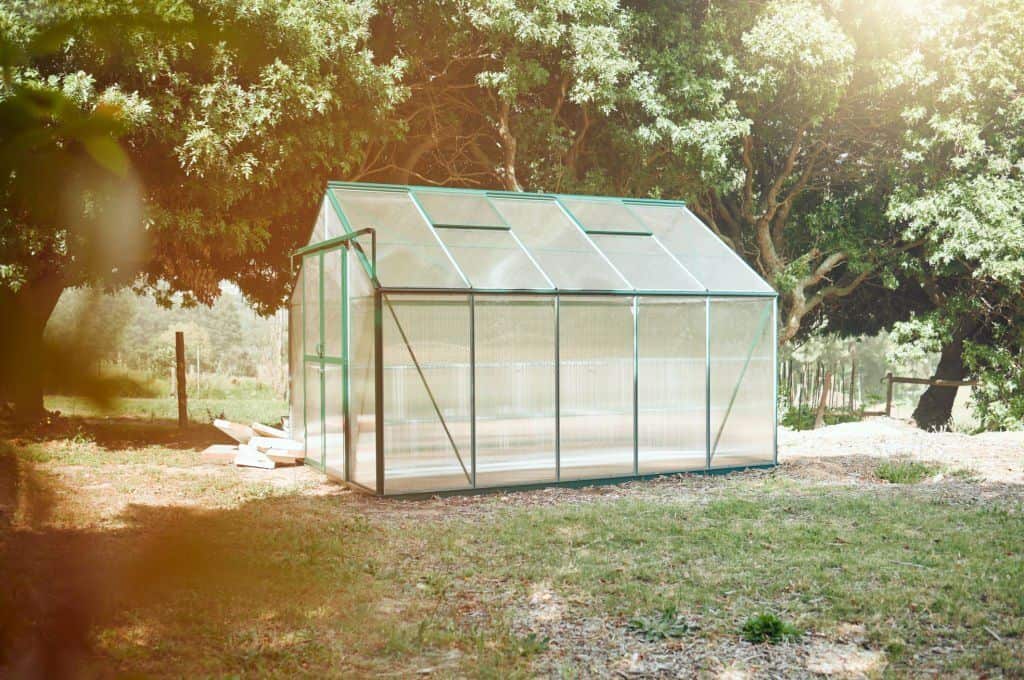A greenhouse is one of the best ways to grow plants year-round, even in cold climates. Greenhouses are buildings with a roof and sides made of glass, used for growing plants that need protection and a warmer climate. They provide a controlled environment for these plants, protecting them from extreme weather conditions and pests. Growing your plants in a greenhouse also allows you to go beyond growing season by starting plants early in the spring and keeping them going into the fall and winter.
Read on to get tips on how to grow a greenhouse garden and take care of it for your plants to thrive.

Where do you Start?
The first step will be picking a location for the greenhouse. Once you’ve chosen a location, you’ll need to choose a type of greenhouse. There various types of greenhouses, so do some research to find the one that’s right for you. Some of the available options include:
• A-frame greenhouses
• Gable-end greenhouses
• Hoop greenhouses
• Ridge and furrow greenhouses
• Lean-to greenhouses
• Free-standing greenhouses
Once you have your greenhouse, you need to set it up and start growing plants. Most greenhouses come with instructions, so you can follow them to personally install it, or have a professional do the work for you.
Considerations before Growing Plants in a Greenhouse
If you’re interested in growing plants in a greenhouse, there several things you should know. Greenhouses provide an environment that is ideal for plant growth, and with a little care and attention, your plants will thrive. Here are a few tips for growing plants in a greenhouse:
1. Choose the right location – your greenhouse should be placed in an area that receives plenty of sunlight because plants need some light to photosynthesise. If possible, choose a south-facing location.
2. Consider the climate – greenhouses are perfect for growing plants year-round, but they’re especially useful in cooler climates. If you live in an area with hot summers, make sure to choose a greenhouse that has good ventilation to prevent the inside from becoming too hot.
3. Select the right plants – remember, not all plants will do well in a greenhouse. When choosing the plants for your garden, make sure to select varieties that are well-suited to the environment.
4. Provide adequate ventilation because it is essential for greenhouse plants. Ensure it has adequate ventilation to prevent the inside from becoming too humid.
5. Control the temperature inside the greenhouse because temperatures can fluctuate throughout the day, so it’s important to monitor and make adjustments as needed. During the winter, you’ll need to keep the temperature above freezing to prevent your plants from dying.
6. Water regularly – just like other garden plants, your greenhouse plants need to be watered regularly. Check the soil daily and water them when needed.
7. Fertilize regularly because it will help your plants keep growing and thriving. Apply a balanced fertilizer every two weeks or as recommended depending on the plants you have grown.
8. Build a garden shed – remember, you also need a place to store your gardening tools and a garden shed will be an ideal place for that. So, you should consider building one close to the greenhouse for convenience. Watch this video for tips on how to build a garden shed from the ground up.
Types of Plants Suitable for a Greenhouse
You can grow a variety of plants in a greenhouse, but it will depend on your climate and the type of greenhouse you have. In general, most plants that require a lot of light and heat to thrive will do well in a greenhouse. This includes many fruits and vegetables, such as tomatoes, cucumbers, peppers, and eggplants. But, there are other types of plants that can be grown in a greenhouse including cool-season crops like broccoli, lettuce, peas, and carrots. You can also grow tropical plants such as cacti, orchids, venus fly traps, and others, but you’ll have to pay a lot of attention.
Conclusion
With a little care and attention as explained in this guide, your plants will thrive in a greenhouse environment. Hopefully, you’ve read through as these tips will help you get started on your greenhouse gardening journey.